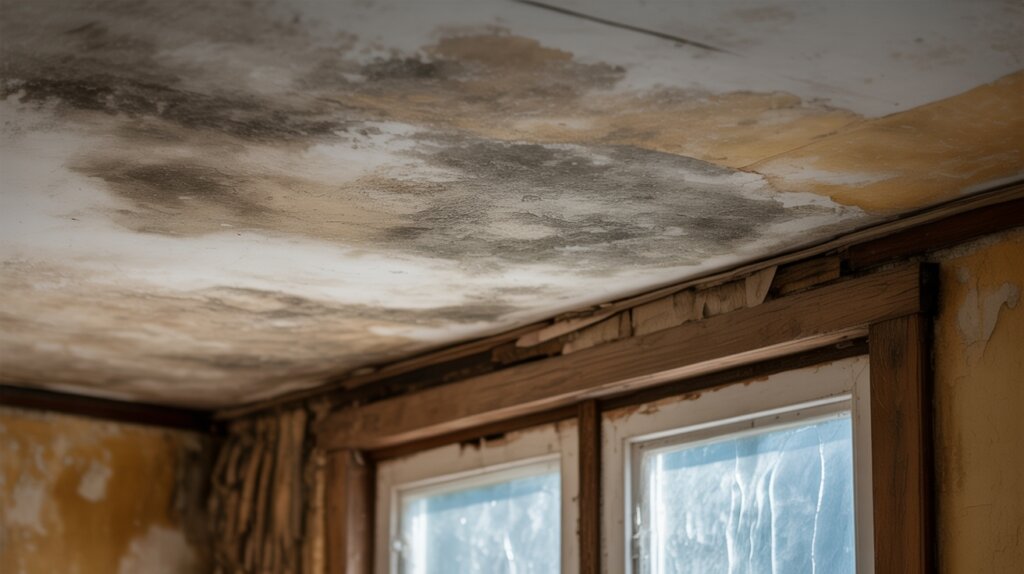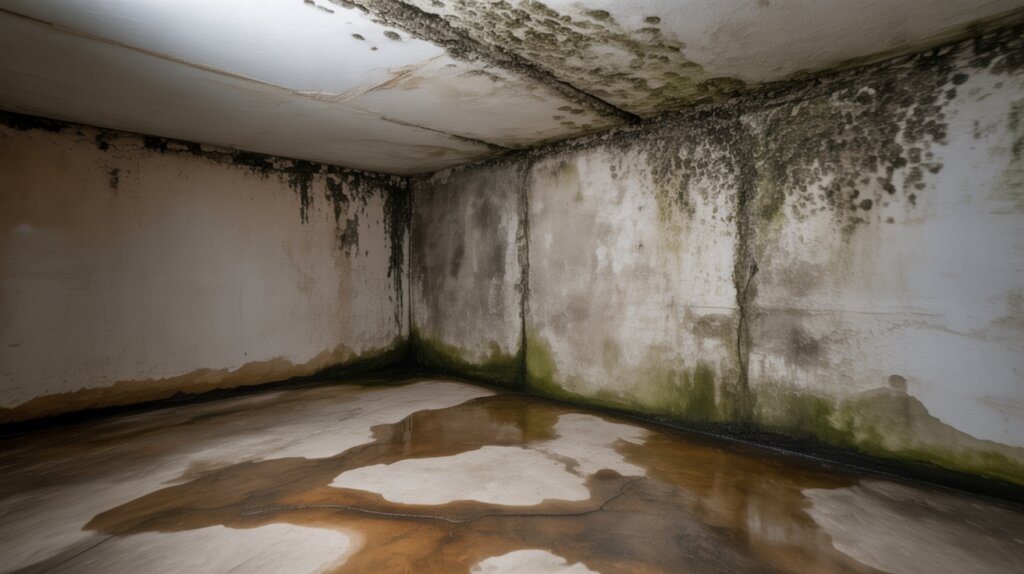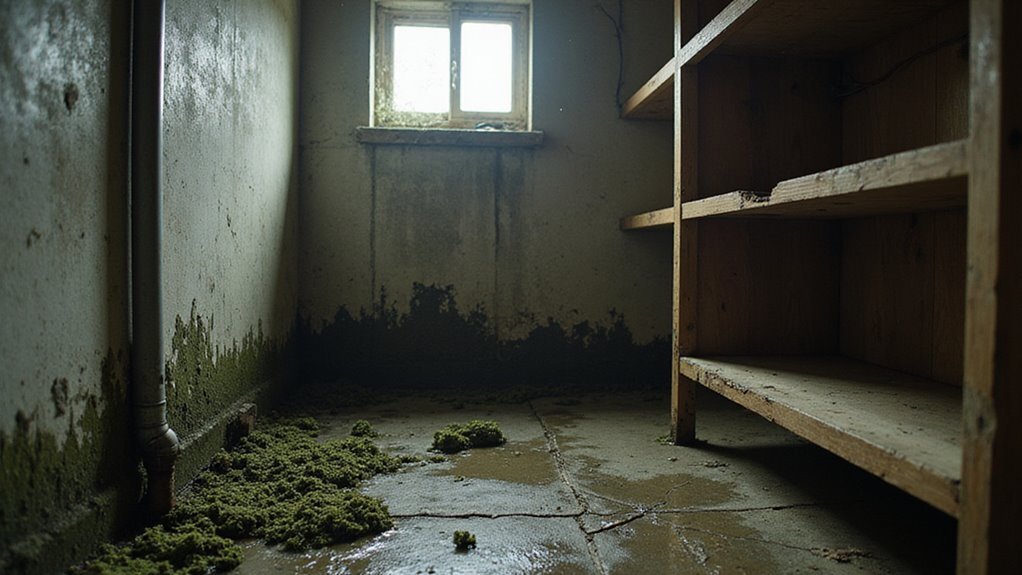Mold and water damage are serious threats to your home’s value. Even small leaks or stains can scare away buyers. Hidden moisture issues often lead to expensive repairs and lower offers.
These problems do not just affect how your home looks. They can mean tough negotiations or even failed sales. Lenders may refuse loans, and appraisers might lower your home’s value. Mold and water damage can sharply reduce your home’s market value and make it much harder to sell.
The good news is you can spot and fix these problems early. With the right steps, you can protect your investment and keep your home’s value strong. This blog will show you how to spot, fix, and prevent mold and water damage in your home.
Understanding the Causes of Mold and Water Damage

Mold and water damage often start when too much moisture collects in your home. Poor ventilation and water leaks make the problem worse. If you understand these causes, you can better protect your home’s value and health.
Moisture builds up in places like basements, attics, or behind walls. Leaky roofs, broken pipes, or cracks in the foundation let water in. Mold can grow quickly if these issues are not fixed. A property lien search can reveal underlying issues that may contribute to water intrusion, such as unresolved repairs or unpaid obligations affecting the property’s condition. Moisture in basements, attics, or behind walls from leaks or cracks can lead to rapid mold growth if left unaddressed.
The Environmental Protection Agency says small leaks can cause mold in just one or two days. If you ignore leaks or moisture, your home may suffer serious damage. This can lower your home’s value and make it harder to sell.
If you regularly check for leaks and manage humidity, you can prevent mold growth. Immediate repairs help stop water damage from getting worse. These simple steps protect your home and keep it attractive to buyers. Regularly monitoring your property’s maintenance history is also crucial in preventing long-term damage and preserving its value.
Common Signs of Mold and Water Issues in Homes
Common signs of mold and water issues include water stains, musty smells, and peeling paint. You should check ceilings, walls, and floors for stains or discoloration. If these appear, there is often a leak or moisture problem. Recognizing common home selling myths can help you better understand how to address water damage and maintain your home’s value. Musty odors usually mean hidden mold is growing somewhere.
Warped floors or bubbling paint can also point to trapped water. Condensation on windows may show that there is too much moisture inside. Additionally, proper inspection is essential for identifying hidden damage before it impacts your sale. Industry data says 60% of homes with water stains have some mold activity. Water damage can lower your home’s value by up to 20%. If you address these problems early, you can protect your home and attract more buyers.
Health Risks Associated With Mold Exposure

Mold exposure can lead to several health risks. People may develop breathing problems, allergies, or asthma attacks if exposed to mold. Those with weak immune systems can have worse symptoms. Inherited House Sale considerations can also influence the urgency of addressing water damage and mold issues before selling.
Mold grows well in damp places. If you ignore water damage, the risk of mold exposure increases. Quick cleanup can help prevent these health issues. Potential home buyers often avoid properties with mold problems. Mold can lower your home’s value if not handled fast. Taking care of water damage quickly protects your health and your property.
Structural Problems Resulting From Water Damage
Water damage weakens your home’s structure quickly. Even small leaks can harm beams, floors, and walls. If left untreated, these issues may cause serious foundation problems. Recognizing early signs of water damage, such as discoloration or musty odors, can prevent costly repairs later. Homes with visible water damage often sell for 15-20% less. Buyers worry about safety and future repairs.
Major structural problems lower your property value even more. Homeowners should look for signs like warping, sagging floors, and wall cracks. These signs often mean bigger problems are hidden. Early repairs can stop further damage. If the foundation is damaged, repairs may cost $5,000 to $15,000. Rotted floor joists usually cost $2,000 to $7,000 to fix.
Subfloor repairs can range from $3,000 to $10,000. Cracked walls may lower value slightly and cost $500 to $2,500 to repair. Sagging ceilings can cost $1,500 to $5,000. These repairs are often needed to restore safety and value. Structural integrity is crucial for maintaining home worth and safety.
Impact on Property Appraisal and Inspection Reports

Appraisers and inspectors lower a home’s value if they find mold or water damage. These problems show there are health risks and expensive repairs. Lenders may not finance homes with these issues.
Appraisal rules require experts to record any visible damage and note past repairs. If mold or moisture is still present, the value drops compared to similar homes. Lenders check these reports to decide if the home is too risky. To protect against future claims, ensuring clear title ownership can be beneficial.
If you fix water or mold problems before selling, you can get a better appraisal. This helps you avoid insurance claim issues. It also makes it easier to sell your home in a busy market. Being aware of home inspection standards can help you prepare your property for sale.
Buyer Perceptions and Concerns
Buyers worry about mold and water damage in homes. They see these problems as serious risks to their health and budget. If a home has mold, buyers may lose trust and offer less money.
Market data shows 80% of buyers treat mold as a major warning sign. Many buyers will leave or try to negotiate a lower price. Even small signs like stains or smells can make buyers think bigger problems exist.
If buyers suspect hidden damage, they may doubt the home’s condition. These concerns can drop a home’s value by 10-30%. Homes without these issues often sell for higher prices. Additionally, probate process requirements can delay the sale and increase costs if damages are not properly disclosed or addressed.
Disclosure Requirements and Legal Implications
Even small mold or water issues require sellers to disclose them to buyers. Most states make it a legal rule to share all known problems. Sellers must mention both old and current damage, even if repairs are complete. Proper documentation of title search and resolution can help substantiate disclosures and prevent future legal disputes. Additionally, maintaining thorough records of building exterior inspections can support your disclosure claims.
If you do not follow these rules, you can face lawsuits or lose your sale. The National Association of Realtors says non-disclosure is a top legal risk for sellers. Accurate disclosure protects you from expensive legal trouble. Buyers often ask for detailed records about water or mold issues. Complete honesty can help you keep your property’s value. Meeting these requirements is now a basic part of selling a home.
Cost of Mold Remediation and Water Damage Repair
You’ll typically see mold remediation costs range from $1,500 to $6,000, but extensive water damage repair can run much higher. Insurance policies often exclude certain types of water and mold damage, leaving you responsible for unexpected expenses. The final price depends on factors like the size of the affected area, material types, and how quickly you address the problem. If your situation necessitates a quick sale, selling to a cash buyer can help you avoid lengthy repairs and get fast cash.
Typical Remediation Price Range
Most homeowners pay between $1,500 and $6,000 for mold remediation and water damage repair. Prices depend on the amount of damage and local rates. Small areas under 100 square feet usually cost less.
If you need structural repairs or to replace drywall and flooring, costs will rise. Emergency services or mold in HVAC systems increase prices. Local rules and labor costs also affect your final bill.
Knowing these price ranges helps you plan your budget. If you understand the factors, you can make better choices during repairs.
Insurance Coverage Limitations
Homeowner’s insurance usually covers water damage only if it happens suddenly. Most policies do not pay for gradual leaks or old mold problems. If you have long-term damage, you may need to pay for repairs yourself.
Insurers often set limits for mold cleanup. These limits typically range from $1,000 to $10,000. Severe mold cases can easily cost more than this amount.
You should always check your policy details. The fine print will list what is covered and what is not. If you do not review your policy, you might face large, unexpected costs.
Factors Influencing Repair Costs
The cost of repairing mold or water damage depends on several important factors. Larger or more serious damage usually costs more to fix. If the area is small or caught early, expenses may be lower.
Materials in the damaged area affect the price. Porous items like drywall or insulation often need replacing, which can increase costs. Hard surfaces may be easier and cheaper to clean.
Labor rates in your area also influence total costs. If repairs need special tools or experts, expenses will be higher. High demand in your region could raise prices.
Homeowners with prevention systems may spend less on repairs. Early detection often limits damage and repair needs. Quick action can help protect your home’s value and lower repair bills.
Insurance Considerations and Coverage Limitations
You’ll find that most standard homeowners’ insurance policies exclude coverage for gradual mold or water damage, especially when it’s linked to long-term maintenance issues. Industry reports show that policyholders often face significant challenges during the claim process, from strict documentation requirements to disputes over cause and responsibility. Understanding these limitations is essential for protecting your investment and managing risk effectively.
Additionally, market conditions such as supply and demand dynamics can influence the likelihood of property damage and the urgency of repairs. Being aware of insurance policy exclusions related to water and mold damage can help homeowners make better-informed decisions about preventative measures and additional coverage options.
Typical Insurance Policy Exclusions
Insurance policies often do not cover mold and water damage claims. Most standard homeowners policies list many exclusions for these risks. If you file a claim, insurers may deny it if the damage happened slowly over time.
Policies usually cover only sudden, unexpected events, such as a burst pipe. Gradual leaks or mold from poor maintenance are usually not covered. If the damage is not sudden, your claim may be declined.
Many policies also limit how much they will pay for mold removal. The payout for mold cleanup can be $5,000 or less. You should check your policy details for these limits and exclusions.
If you live in a high-risk area, you could add extra coverage for these risks. Reading your policy carefully helps protect your home and investment. Consider getting endorsements if your home is at risk for water or mold damage.
Claim Process Challenges
Homeowners often face problems when filing insurance claims for mold and water damage. The process can be confusing and time-consuming. Strict rules and deadlines make it even harder.
Insurance companies may deny claims if they think the damage was not sudden. If the problem was caused by slow leaks or lack of maintenance, coverage may not apply. Detailed records are needed to prove your case.
You must provide photos, receipts, and reports from contractors. Sometimes, environmental test results are also required. If documentation is missing or unclear, your claim may be denied.
Industry data shows that about 40% of mold claims fail due to poor records or unclear causes. If you do not keep good records, your claim is at risk. This can affect your home’s value and your finances.
How Mold and Water Damage Affect Mortgage Approval
Mold and water damage can make it hard to get a mortgage. Lenders check the home’s condition before they approve a loan. If there is mold or water damage, they may deny the application. Conducting a thorough inspection and providing documentation of repairs can help mitigate these concerns. Mortgage lenders often ask for a mold inspection if there are signs of water leaks.
They worry that mold and water issues could harm the house’s structure. Costly repairs can lower the value of the property. Buyer’s and sellers should provide proof that all water leaks are fixed and mold is removed. Professional reports help show the home is safe. Without this proof, lenders may delay or refuse the mortgage. Additionally, understanding the extent of foundation issues can influence the lender’s decision and potential repair costs.
Steps to Identify Hidden Water Issues
You need to watch for common signs of moisture, such as discoloration, musty odors, and warped surfaces, since these often signal hidden water problems that can impact property value. Industry data shows that using moisture meters and infrared cameras can accurately detect issues behind walls or under floors. By leveraging these tools, you’ll protect your investment and avoid costly surprises during inspections or transactions.
Common Signs of Moisture
Common signs of moisture include changes you can see, feel, or smell in your home. Moisture problems are not always obvious, but certain clues can help you spot them early. Quick action can prevent expensive repairs and health risks.
Stains on ceilings or walls may mean water is leaking somewhere. Warped floors, sagging drywall, or crumbling plaster can also show there is too much moisture. If you see peeling paint or bubbling wallpaper, hidden dampness could be the cause.
A musty or damp smell often points to moisture problems. Cold, clammy surfaces and too much condensation are also warning signs. If you notice any of these, it is wise to check for leaks or mold.
Early detection of moisture problems helps protect your home’s value. If you act fast, you can avoid bigger issues later. This will also make it easier to sell your property in the future.
Tools for Detection
Homeowners and investors need reliable tools to find hidden water problems. Moisture meters check for high moisture in walls, floors, and ceilings. These readings help you plan repairs and avoid bigger issues.
Infrared cameras show temperature differences that can point to leaks or water entry. If you want a more complete picture, thermal imaging scans are a good choice. These tools are helpful before buying or selling a property.
Hygrometers measure indoor humidity. If you keep humidity in check, you lower the risk of mold and save on energy costs. Using proper detection tools protects your investment and keeps your property safe and healthy.
Preventative Measures to Protect Home Value
Homeowners can protect their property value by preventing mold and water damage. Regular home maintenance lowers the risk of costly repairs. Keeping your home in good condition helps maintain its market value.
You should check your roof, gutters, and downspouts often. If you find damage, fix it quickly to prevent leaks. Well-kept exteriors may sell for up to 10% more, according to realtors.
Plumbing leaks need immediate attention. If your basement often floods, install a sump pump. Quick action reduces water damage risks.
Landscaping also protects your home. Yard grading should direct water away from the house. Using moisture-resistant plants and keeping the foundation clear helps stop water from collecting near your home.
Marketing a Home After Remediation
Marketing a home after remediation means being honest and showing proof of the repairs. Buyers want to see before-and-after photos, receipts, and inspection reports. If you provide these, you build trust and increase the home’s value.
Simple home decor can make rooms look clean and welcoming. Neutral colors and modern touches help buyers picture living there. Landscaping also matters; a neat yard shows you took good care of the property.
If you show the remediation process and any updates, buyers will feel more confident. Studies suggest good landscaping can raise property value by up to 12%. Careful presentation can help you sell faster and for a better price.
Working With Professionals for Assessment and Repair
Although minor issues can be managed on your own, significant mold and water damage require professional assessment and repair to protect your investment and meet market expectations. Engaging certified specialists ensures you receive reliable professional inspections and expert assessments that uncover hidden problems, safeguarding your home’s value.
Data shows that homes with documented professional remediation recover up to 80% of lost value versus only 60% for DIY attempts. Lenders and buyers demand evidence of thorough repairs, making expert intervention essential.
| Step | Professional Role | Outcome Achieved |
|---|---|---|
| Initial Inspection | Certified Inspector | Identify hidden damage |
| Moisture Detection | Technician | Pinpoint water sources |
| Mold Assessment | Environmental Specialist | Determine extent |
| Remediation | Licensed Contractor | Execute safe removal |
| Final Verification | Inspector | Certify complete repair |
Conclusion
If homeowners ignore water damage or mold, they risk losing significant value on their properties. Even small issues can lead to lower sale prices and fewer interested buyers. Addressing these problems early helps protect your investment and makes your home more attractive in the market.
If you are overwhelmed by repair costs or want a quick solution, we buy houses for cash. We understand the challenges of selling a home with water or mold damage. Selling to us saves time, money, and effort compared to traditional listings.
If you want to sell your home quickly and avoid costly repairs, contact Greg Buys Houses. We can provide a fair cash offer and help you move forward with confidence. Let us make your selling process simple and stress-free.

